Filling the Gap: AMOLED and LCD from 2010 to 2012
by Joshua Ho on July 26, 2014 6:00 AM EST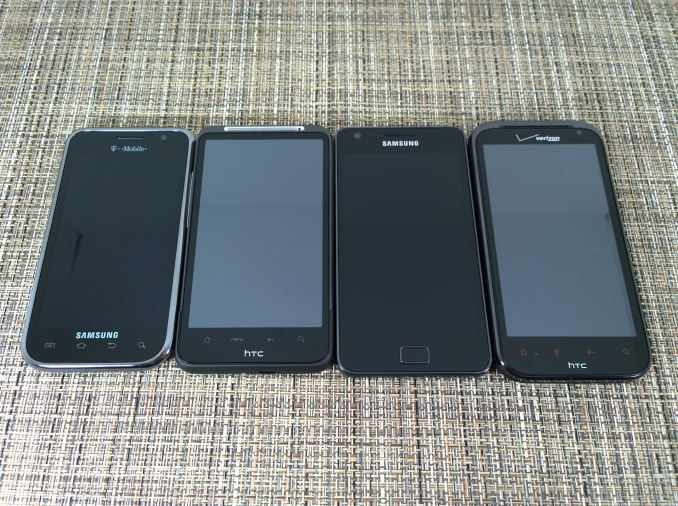
Introduction
For a while now, I’ve realized that there is a massive gap in the continuity of smartphone display history. Until the last few months of 2011 or early 2012, proper testing of smartphone displays was few and far between. Most websites tested peak brightness and contrast, and possibly white point. While some websites did go in depth, they would often only test a few phones. Of course, now things are different. Websites are starting to scrutinize display quality from all angles from color accuracy to reflectance, but no one has ever gone back to properly test old devices.
Of course, the best time to have tested these old devices was when they were new. The next best time is now, so let’s get to it. Unfortunately in the span of 4 years it’s become rather difficult to find all the devices that I’d like, but we’ll look at some of the key representative devices of each generation. This means the Galaxy S, Desire HD, Galaxy S2, and Rezound. The first three are all WVGA, 800x480 resolution displays. The Galaxy S has a 4 inch display, and all the other devices have a 4.3” display. All of them are also easily used with one hand, which is almost a surprise these days. Unfortunately, battery life testing won't be possible as all of the devices have aged too much for the results to be representative of their actual performance. As always, in order to properly test displays we use a custom workflow on SpectraCal's CalMAN 5.
Samsung Galaxy S
For most people, the Galaxy S would be their first encounter with Samsung’s SAMOLED displays and PenTile layouts. While it may have been acceptable at some point in the past, it’s quite obvious that this display hasn’t aged well at all. While high pixel density masks the effects of PenTile quite well, they’re omnipresent in the original Galaxy S. Even at relatively far distances from the display I can make out gaps between pixels in text. At the edges, there’s a strange effect where the lines are clearly not straight. Instead, the edges of text appear to be quite rough, making a zig zag pattern instead of a clean line.
Putting aside PenTile, the brightness of this display has aged relatively well. The expected brightness seems to be about 350 nits out of the box, and the T-Mobile unit I tested seemed to have lost some of its peak brightness, but it’s still quite bright at around 320 nits. Contrast is great as always here.
Grayscale is where things get ugly. Red is effectively no longer visible in the graph by 35% white, and both green and blue are completely out of control. The result is one of the worst averages for dE2000 error I’ve ever recorded.
In the saturation sweep, we see a similar story. Just about every type of mistake in color accuracy is seen here. Extreme blue/green shift on white, saturation compression, gamut far out of sRGB, hue shifts with saturation changes, and no way to improve it.
As expected, a similar result is seen in the Gretag Macbeth ColorChecker. This is simply a logical extension of poor color control in the saturations test, so this is no surprise. Looking at the Galaxy S5 LTE-A, it’s definitely incredible to see just how far Samsung has come since the early days of AMOLED technology.



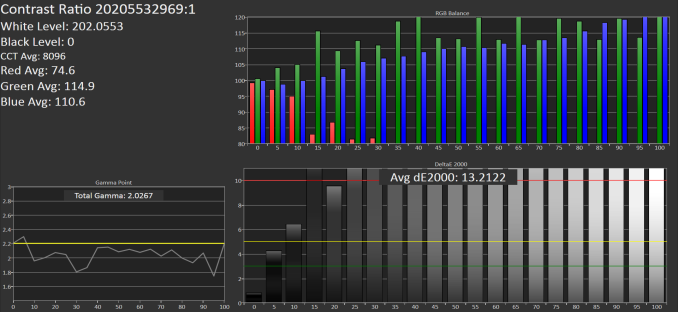
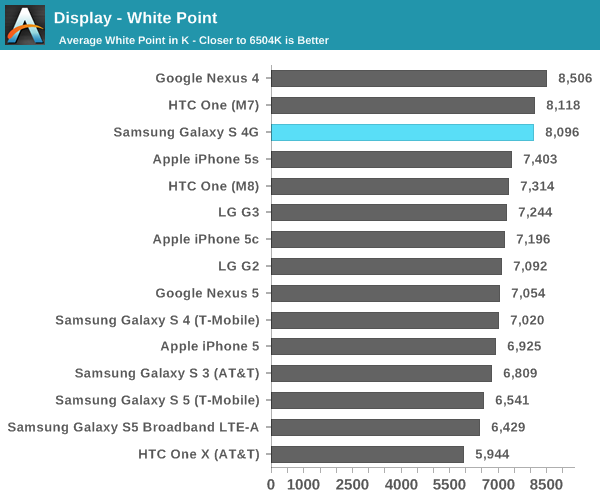
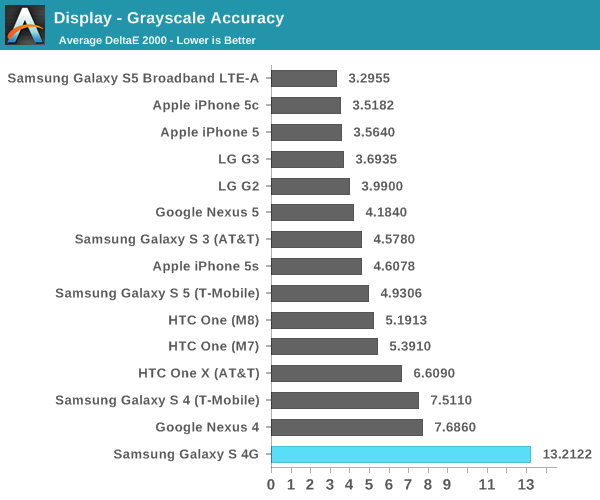

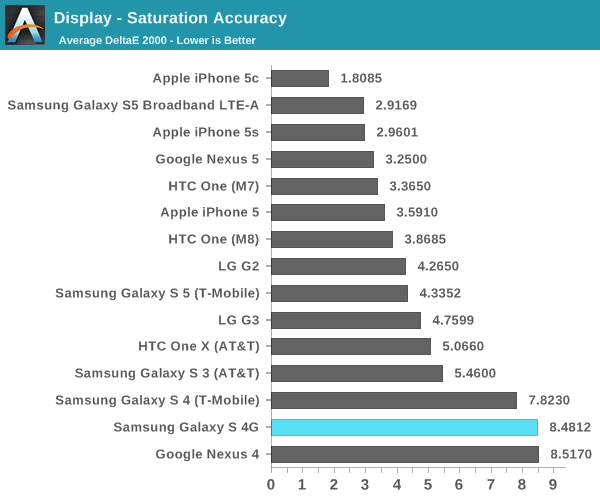
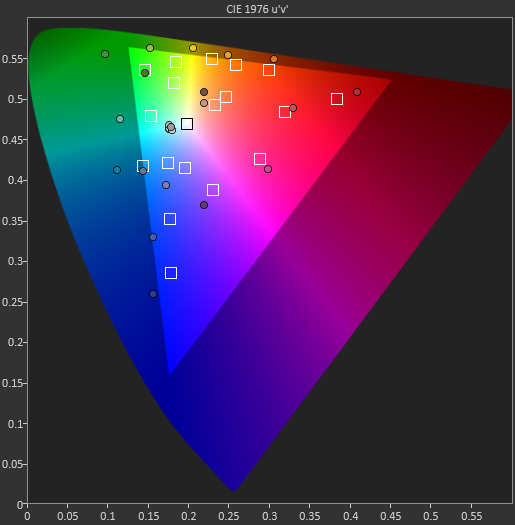
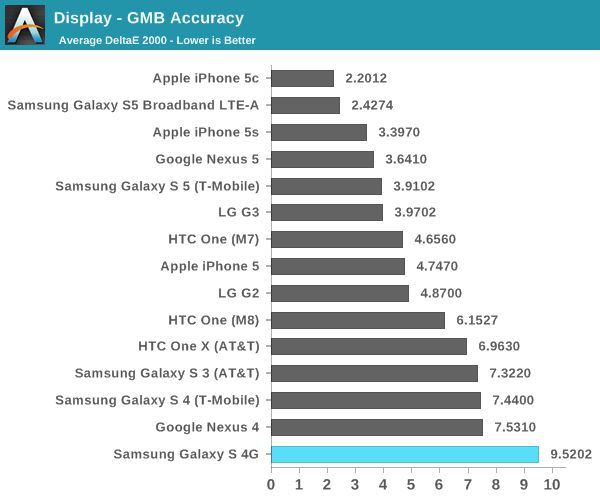








72 Comments
View All Comments
kokono - Monday, July 28, 2014 - link
I still have an Athlon64 X2, system with nForce chipset, still going strong,it would be nice to see some new tests..
Orenj - Saturday, July 26, 2014 - link
Having just retired my Rezound for an Xperia Z1 Compact (another 4.3" 720p--yay for phones that actually fit in your pocket!), I can vouch for the fact that the Rezound had a great display; the z1c, while generally good, is noticeably less accurate in color at brighter settings. Unfortunately, neither is bright enough to be usable outside in the sun here in Tucson... still waiting for fast color e-ink. Oh yeah, and the Rezound had atrocious battery life even when new; the z1c is a dream in comparison.scy1192 - Saturday, July 26, 2014 - link
Upgraded from the Rezound to the LG G3. With all the poo-pooing the display got I was worried it would be worse than my Rezound, but I'm glad that it turned out to be better all-around. It really did have a great display for the time.HangFire - Saturday, July 26, 2014 - link
Thank you for filling in the gaps, and yes some of us do care, maybe I'm just one of the 3.5 that do. Also I never realized HTC released a "Thunderbolt 2" (aka Rezound) wow it's a good thing they gave it more than one name. By November 2011 no one wanted anything to do with anything called Thunderbolt! I recall my original Tbolt had what seemed to be a very nice display, but could not compare to my better half's AMOLED in sunlight. That didn't bother me too much, but the battery life and lack of a modern Android O/S sure did. I wonder how it compares to the Rezound et al, but it's all academic now, at least my M7 rocks!SunLord - Sunday, July 27, 2014 - link
Unless these are basically never used phones wouldn't it be kinda pointless to test the screen on an Amoled display due to how they wear out after a few years?mkozakewich - Sunday, July 27, 2014 - link
Now that they're testing this, they can do an "after three years" test on models like the S3 or iPhone 5.I agree the tests on the older phones don't mean as much, but then, people aren't going out and buying them all that much, either. It's still important historical data about the progress of these technologies.
Icehawk - Sunday, July 27, 2014 - link
What was the point of this in 2014?HangFire - Monday, July 28, 2014 - link
The industry keeps telling us they're getting better, but it isn't always so.AnnonymousCoward - Monday, July 28, 2014 - link
Thanks for doing this review, so I can actually compare my current phone with the latest.Peichen - Tuesday, July 29, 2014 - link
Early Android phones are crap. Poor display, cheap build, laggy and small battery. The only thing keeping it afloat is the huge marketing budget.Android phone from the Spring 2013 cycle on are much better and closer to iPhone in general quality. Screens are on par with iPhone except color calibration. Build quality on some models improved a lot with better parts. Lag still there but mitigated with fast SOC. Battery life are on par except the phone have to be big to accommodate the big battery.